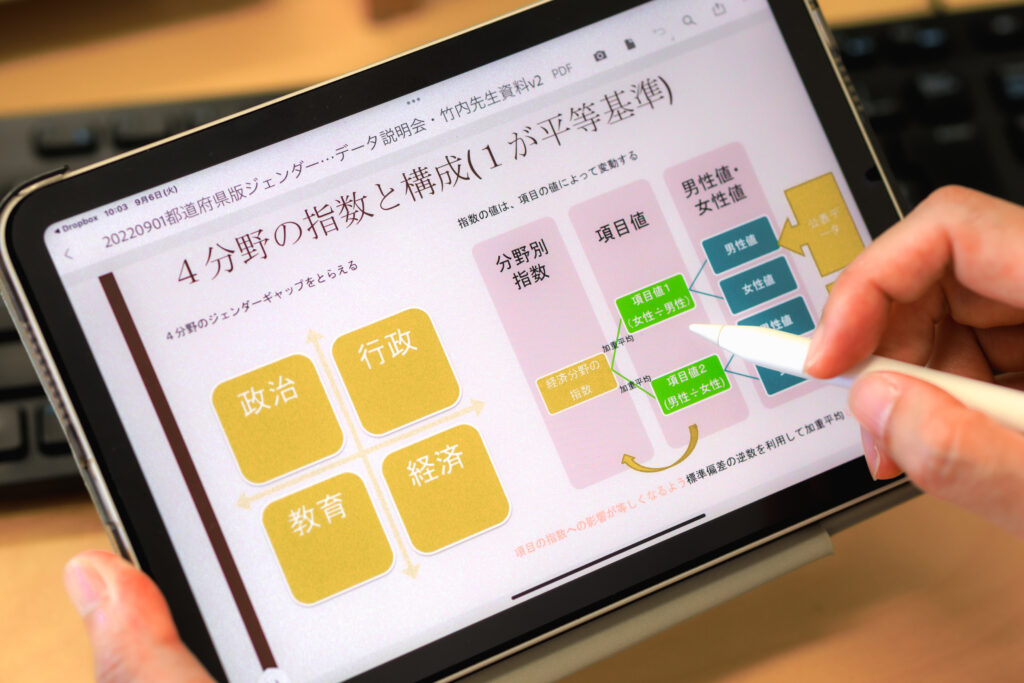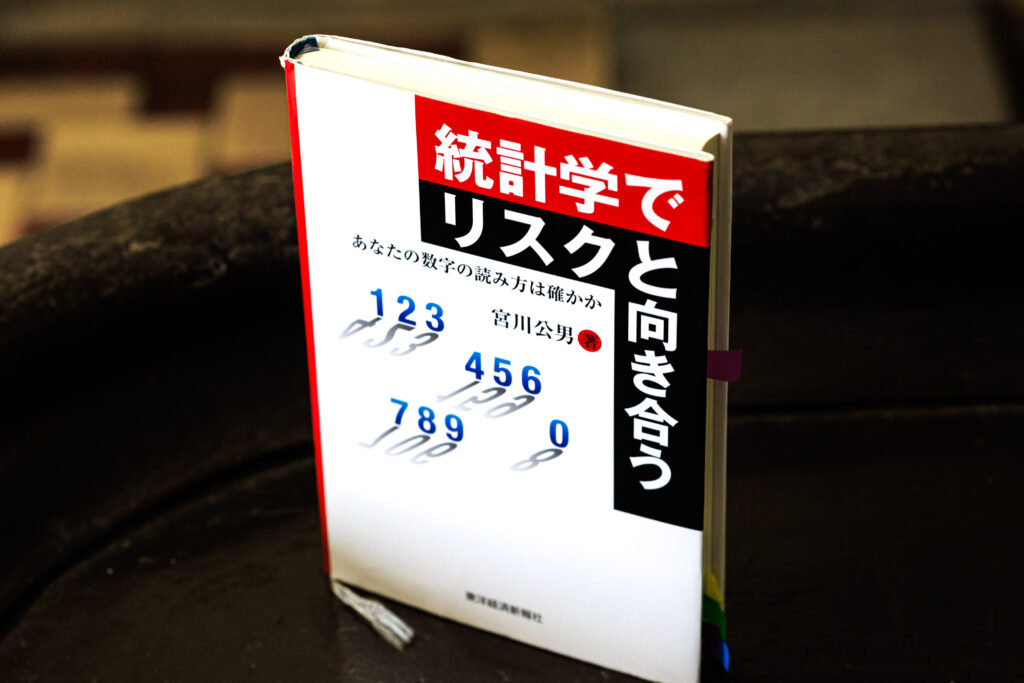
Associate Professor Asuka Takeuchi from the Faculty of Economics specializes in statistics. Her area of research spans a wide scope, from predicting share trading income to calculating the prefectural gender gap index. She talks about the potential of statistics, a universal field of study that unravels the meaning of data.
Statistics is a field of study that investigates the characteristics of data and relationships between different sets of data. New data is also created in this field. For example, the prefectural gender gap index that we are currently working onis created using several sets of statistical information released by the national government.
Another role of statistics is to process data. The dispersion of data from the mean is called the standard deviation. Several sets of data are aggregated to calculate the prefectural gender gap index, and data with large standard deviations has greater impact on the index. To equally treat the impact of each set of statistical information on the index, we use the weighted mean which can correct for dispersion.
My main area of research is econometrics. Regression analysis and other methods are used to conduct empirical analysis on the validity of economic models. Amid the trend of increasing emphasis on data science, statistics is a subject that is taken by almost every student in the Department of Economics.
In my seminars, there are also students who carry out analysis on everyday topics, such as analyzing sales at convenience stores as well as predicting the outcomes of soccer matches and horse races. With the rising importance of data science in modern times, statistics will become an even more universal field of study.
Metropolitan areas have a lower employment rate of highly educated women compared to regional cities

Before becoming a mother, I mainly undertook research on predicting income from share trading, but after having a child, I began also working on research regarding female employment after Professor Noriko Arai and Associate Professor Nobuko Hosogaya from the Department of Management reached out to me.
What is the impact that life events—such as becoming a mother—have on female employment? I was interested because I felt a significant loss of time and stamina due to pregnancy and parenting.
From the national Employment Status Survey, we separately applied for and obtained anonymous data of several hundreds of thousands of people showing attributes such as family structure, education and more. Then, we embarked on our study based on the hypothesis that women with higher education have a higher rate of employment.
The results overturned the hypothesis, showing that the full-time employment rate of highly educated women who are raising children was low in metropolitan areas, both in the Kansai and Kanto regions. As the employment rate was high in regional cities, we felt there could be issues unique to large metropolitan areas. It is not clear if they are unable to work or choose not to do so, but it is truly a waste of human resources.
Issues with female employment seen from the gender gap index
Currently, I am mainly undertaking research on the prefectural gender gap index jointly with Professor Mari Miura from the Faculty of Law and Kyodo News while referencing the results of the abovementioned study. In the Global Gender Gap Report—which shows gender parity—released by the World Economic Forum in March 2021, Japan was in 120th place, among the lowest in the world.
I embarked on this research because I think that, by calculating the prefectural index, local governments will be able to take ownership of the issues. We looked at 28 factors in four areas—economics, politics, public policies, and education—and used six to nine types of statistical information for each area.
The results further clarified the issues of female employment in metropolitan areas and regional cities and showed a decreasing trend in the female employment rate around metropolitan areas. This research overturned the image that there are more obstacles to women empowerment in the regional cities. By the way, Okinawa Prefecture was in first place and had the highest number of female entrepreneurs.
At the same time, we must not overlook the point that, the lower the salaries of male workers, the greater is the parity of female employment rate. This was a visualization of the disparities between metropolitan areas and regional cities. Diversity is not just an issue between the genders. I think we can also contribute toward solving various social issues such as that of foreign workers by using indices in policy.
The book I recommend
“Tōkeigaku de Risuku to Mukiau”(Using Statistics to Face Risk)
by Tadao Miyakawa, Toyo Keizai Inc.

Many familiar examples—such as deviation scores, the Down Jones Industrial Average, and stocking data of convenience stores—are used to properly explain the uses of statistics. It is a book that allows you to see the difference when you replace intuition with numbers.
-
Asuka Takeuchi
- Associate Professor
Department of Economics
Faculty of Economics
- Associate Professor
-
Graduated from the Faculty of Economics, Tokyo Metropolitan University, and received her Ph.D in Economics after completing the doctoral program at Hitotsubashi University’s Graduate School of Economics. After working as an economist at the Bank of Japan’s Institute for Monetary and Economic Studies and assistant professor at Waseda University’s Faculty of Commerce, took on the position of assistant professor at Sophia University’s Faculty of Economics in 2012 before assuming her current position as associate professor in 2014.
- Department of Economics
Interviewed: September 2022